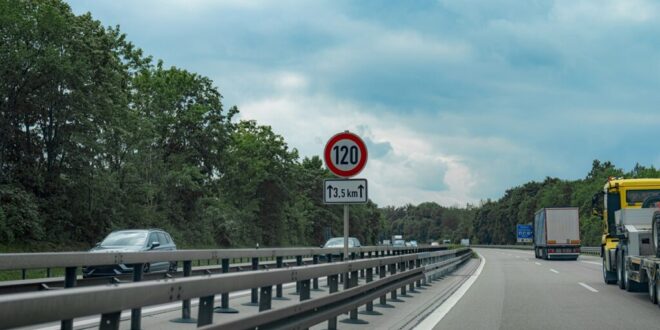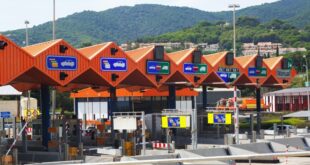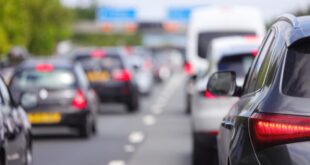Signage indicating the speed limit on a Spanish highway. Dynamic speed limits will allow drivers to see the maximum speeds on the AP-7 change in real time depending on weather and traffic conditions.
Credit : Romberi, Shutterstock
Driving in Spain just changed- here’s what you need to know… Spain has taken a bold leap in road safety with an idea that’s set to change the way we drive: dynamic speed limits.
The classic 120 km/h motorway sign, long a fixture of Spanish highways, is no longer the final word on speed—at least, not on the AP-7 near El Vendrell in Catalonia. The speed limit is now adjusted in real time based upon the actual traffic conditions on the road. This is the first of its kind in Spain.
How does dynamic speed limit work in Spain
On paper, the idea seems simple but in reality it is quite impressive. Instead of a set limit, electronic signs on a 150-kilometre section of the AP-7 show new speed limits at different times of the day. These changes aren’t random—they’re powered by a smart system using artificial intelligence (AI) that takes into account live traffic flows, weather conditions, the time of day, and even the state of the road surface.
If you are driving and a storm rolls in, you shouldn’t be surprised to see the speed limit decrease. Traffic at rush hour is heavy. Slow down signs will be posted to ensure that traffic is kept safe and flowing. Even roadworks or fog can be taken into account. It’s all about keeping drivers safer—and, as the government is quick to point out, about cutting emissions and fuel consumption at the same time.
Why is the speed limit changing?
There’s no denying that speeding is a leading cause of road accidents. Over the past decade the Spanish authorities tried hard to lower the accident rates in their country, but they have not been successful. By making speed limits more flexible—and more responsive to actual conditions- the hope is to create safer, calmer roads for everyone.
The model is one that has shown success in Europe. In Germany and France dynamic speed limits helped reduce accidents and congestion in particular areas that are busy or affected by weather. This approach is used on German motorways to reduce accidents and traffic jams during rush hour. France has adopted dynamic limits in tricky spots—think sharp bends or sections prone to sudden downpours—with similar success.
The impact of dynamic speed limits on Spanish motorways
You may find the new system strange at first if you’re used set-and forget motorway driving. Some drivers worry that they will be confused or miss a speed limit change. But as anyone who’s driven in Germany will tell you, you get used to it—and, crucially, the signs are big, bright, and clear. It’s important to stay alert and check the displays. This is especially true if you are used to using cruise control.
It should also help avoid the classic Spanish autobahn pile-ups during sudden weather changes and heavy traffic. The system encourages smoother, more efficient driving. This means that less fuel is consumed and the carbon footprint is smaller.
What will happen to dynamic speed limits in Spain?
The big question is: What’s next? The AP-7 pilot is being closely watched by road safety experts—and if it delivers on its promises, there’s a good chance more of Spain’s busiest motorways could soon follow suit. The cost of rolling out this technology across the country is not cheap. Costs for electronic signs, sensors, AI, and other components are high. If it means safer roads with fewer emissions, then many will view it as money well-spent.
What could be the problems that dynamic speed limits might cause on Spanish roads
No system can be perfect. Some critics point out that AI can only be as good as the data it receives—if sensors fail or traffic conditions change too quickly for the system to keep up, mistakes could happen. Some critics worry about drivers who ignore signs or are caught by sudden changes in speed limits.
The benefits of the system are said to outweigh its risks. Regular updates and maintenance will keep it reliable.
For now, if you’re heading along the AP-7 near El Vendrell, keep an eye on those speed limit signs – they might not say what you’re expecting. If the trial is successful, dynamic speed limits could become a common feature of Spanish roads. The fixed-speed autobahn could be replaced in the near future by a more intelligent, safer and flexible method of driving.
 Costa News Spain Breaking News | English News in Spain.
Costa News Spain Breaking News | English News in Spain.





